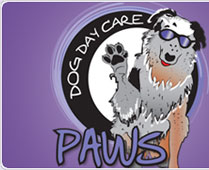Understand the Client Views
You are not selling hamburgers, servicing a car, or working with some other inanimate replaceable thing. You are providing services and caring for an irreplaceable, living, breathing sentient being with its own unique personality that has been shaped by its interactions with its owner over the course of its life up to this point. Add to this that pets are capable of both giving and receiving love and you can begin to understand the unbreakable emotional bond and/or dependency that some pet owners will have with their pets. You must understand that you are dealing with a customer’s feelings, their fear of loss and their ability to (sometimes wrongly) empathize with what a pet may or may not experience or have experienced which can change the typical service business customer relations dynamic quite drastically. You must take into account that when a customer brings a pet to you for daycare, grooming, boarding or any other service they are entrusting you with their emotional equivalent of a child, brother, friend, or lifelong companion; a part of their life and quite possibly a key component of their identity and self worth that they can be extremely emotionally intertwined and attached to.
While the preceding paragraph may have been a bit long winded, the intent was to drive home that the most important part of operating a successful pet services business is to understand the client and communicate clearly and effectively with them. You can have all of the latest, greatest tools in the world and the best looking pet care facility in your area, but if you are unable to effectively communicate with the client, understand their needs and transform their wants and desires into a profitable service that meets both their situational and emotional needs then you will fail. Communication is key, and it can be a delicate balancing act at times. Especially in our current society of instant gratification and the customer is always right even when they are clearly wrong.
In many situations you will find yourself needing to tactfully inform a client that a specific request may pose a safety concern, be impossible, unreasonable or place undue stress on the animal. The reverse is also true and you will often times find yourself trying to talk a client down and explain that a situation, procedure or process will cause no harm to their pet and will actually be beneficial in the long run. Situations on both ends of the spectrum that come to mind are bedding, nail trims, and dematting a dog.
Not Yet Available For Purchase and Download




